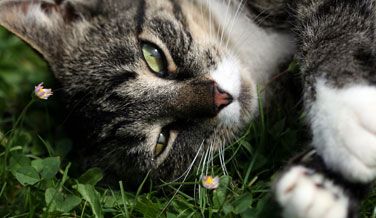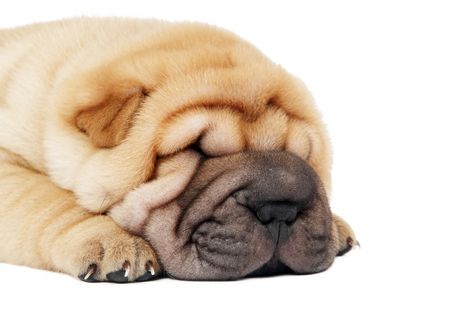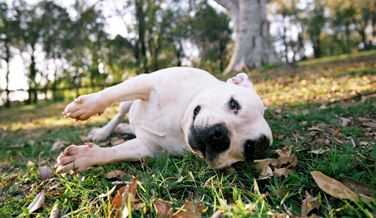QUALITY VETERINARY EYE specialist AT A FAIR COST
TO GIVE YOUR LOVED ONES A BETTER LIFE
Eye Surgery
All of our offered eye surgeries can be performed here at the Animal Eye Center in Loveland, CO. Please call with any questions or to get more information about any of the surgeries we offer.
Cataract Surgery
Cataract surgery is performed by making a small incision at the top of the eye. We then use a phacoemulsification (ultrasonic pulse) machine to break up the cataract and simultaneously remove the tiny lens pieces. We can often insert an artificial lens much like humans use after having the cataract removed. Once the cataract is removed it can NOT come back, however there can be secondary problems that may arise after the surgery.
Corneal Laceration / Perforation
This type of condition usually requires what is called a conjunctival graft to be placed on the damaged eye. This involves taking a thin piece of the skin layer that covers the white of the eye and pulling it over the damaged area in the cornea. It is then sutured into place to create a “BandAid” which will help with blood flow to aid in corneal healing. After 2-3 months the graft can typically be trimmed back. There will always be a pinkish spot on the cornea due to the skin bandaid that adheres to the cornea permanently, but this does not usually affect the pets vision. If the laceration of perforation is too severe to repair with a graft then likely enucleation would be the only way to ensure comfort of the pet and prevent infection.
Glaucoma
We offer Endoscopic Cyclophotocoagulation. This procedure lowers intraocular pressure by ablating the ciliary processes with a diode laser. The ciliary processes are what produces the aqueous humor which builds up causing the increased pressure. Using a diode laser equipped with an endoscope allows for direct visualization of the ciliary processes which permits a more targeted approach.
Cryo
We mainly use cryo therapy to remove and prevent future growth of benign eyelid tumors, sometimes we will use this method to treat distichia. The area to be treated is injected with a local anesthetic and many times the pet does not have to be asleep for the procedure. Once the area is numb we will use liquid nitrogen to target and freeze the tumor or eyelash.
Entropion/Ectropion
We can correct eyelids that roll either inwards or outwards. Many times this can be done by removing a wedge shaped piece of skin from the eyelid, when this is sutured it replaces the eyelid to the normal position. If the pet is still very young we may be able to “tack” the eyelids with suture. This is basically pleating the eyelid in the direction that we want so that the skin will re-learn how to grow so that it will remain in the normal position.
Distichia
We can use radiofrequency or cryo therapy to remove distichia. The severity of each case is taken into consideration by the ophthalmologist in order to determine the best and most effective form of treatment for you pet.
Cherry Eye
When the nictitans gland prolapses the only way to resolve the problem and keep the pet comfortable is to reposition the gland. Removal of the gland is NOT an acceptable form of treatment as it will result in permanent dry eye that cannot be treated. Our ophthalmologist will create a “pocket” behind the third eyelid. The gland is then positioned in the “pocket” and sutured into place.
Enucleation
Sometimes the only way to eliminate your pet’s pain is to remove the damaged eye. This can be due to glaucoma, lens luxation, perforation or other painful conditions that are no longer manageable with daily medication.
Parotid Duct Transposition
For some severe cases of dry eye we can perform a PDT. This is when the ophthalmologist takes a salivary duct from each side of the mouth and moves them to take the place of the tear gland. This is not a perfect solution since saliva is not the same as tears, but in very severe cases it is an option to try and keep the animal comfortable without having to remove the eyes.
Lens Luxation
When the thin fibers that hold the lens in place tear this results in the lens falling either forward or backwards in the eye. The ophthalmologist will make an incision at the top of the eye and remove the lens carefully so that there is no damage to the cornea or iris. This will prevent future secondary problems caused by the lens being out of its intended location.
Our Services
Our doctor will perform a complete animal eye care examination on your pet with the assistance of our nurses. This includes examining the eye with a head set, hand lens, panophthalmoscope and slit lamp to aid in magnification of different parts of the eye.
Companion Animal Eye Registry
The purpose of the OFA Companion Animal Eye Registry (CAER) is to provide breeders with information regarding canine eye diseases so that they may make informed breeding decisions in an effort to produce healthier dogs.
Contact Us
All of our offered surgeries can be performed here at the Animal Eye Center in Loveland, CO. Learn more about any of the animal eye care we offer and current availability.




